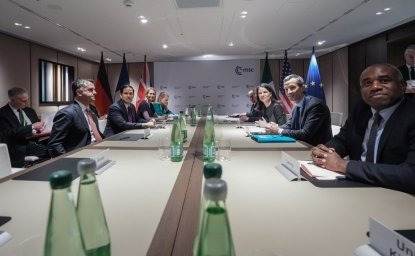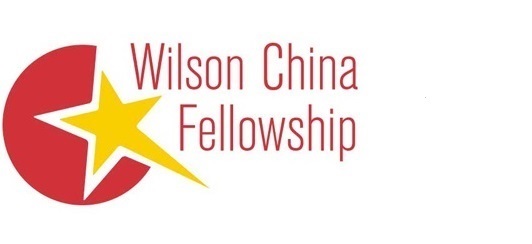In December 2021, the Russian Ministry of Foreign Affairs put forward an eight-point draft treaty[1] with a list of security demands of the Western alliance. These include reverting NATO forces to 1997 positioning, banning new members from joining the alliance, and limiting NATO’s presence in Eastern Europe. Washington responded that these points were unrealistic as they would entail the removal of multiple Eastern European countries from the NATO alliance and capitulate to Russia’s desire for a greater sphere of influence over its neighbors.[2] In a show of force, Russia positioned an estimated 100,000 troops along its border with Ukraine, with many fearing an imminent invasion of Ukraine. Renewed debates over NATO’s Eastern European enlargement ambitions, the potential for further Russian aggression, and uncertainty over Ukraine’s future have led other countries to reconsider their engagement with NATO – including Finland and Sweden.
Together with Austria, Cyprus, Ireland, and Malta, Finland and Sweden are the only EU states that are not members of NATO. Both have been militarily neutral since World War II, although the end of the Cold War reignited the NATO question in both countries. After deciding to remain militarily neutral in the 1990s, both eventually abandoned their political neutrality when they joined the European Union together in 1995. Finland and Sweden’s policies of military non-alignment have persisted to the present, although renewed threats of Russian aggression are prompting conversations of their potential NATO membership.
This report examines Finland and Sweden’s prospects of NATO accession since the end of the Cold War. It explores domestic debates surrounding NATO membership and asks if one country could feasibly join without the other. If these countries joined NATO, it would fundamentally change the security constellation in Northern Europe. Also, NATO membership would irrevocably change Finland’s and Sweden’s historic identities as neutral countries. Finally, the paper discusses the implications for the future, arguing that while it is most likely that neither country accedes to NATO in the near term, if they did join it would be together.
Given Sweden and Finland’s deep business, cultural, and historical ties, it is reasonable to believe that the two countries will continue to deepen their commitments to NATO in light of tension in Ukraine but this will stop short of pursuing full membership. Nonetheless, we acknowledge their differences which stem from unique historical paths, social values, identity, and political preferences: as former Finnish President Tarja Halonen put it, Finland and Sweden are “sisters but not twins.” For all of their commonalities, the two have different motivations and desires around NATO membership.
Background
Finland’s unique relationship with Russia is largely a result of its history. Prior to independence in 1917, Finland had been a part of both Sweden and Russia. For almost 700 years, Finland was a part of Sweden until the Finnish War of 1809 when Finland became an autonomous part of the Russian Empire. The Winter War (1939) and Continuation War (1941-44) significantly shaped Finnish-Soviet Union relations. The foreign policy approach adopted by President Paasikivi and President Kekkonen, the Paasikivi-Kekkonen doctrine, positioned Finland as a neutral country during the Cold War while maintaining good relations with its neighbor to the East. This doctrine was enabled by the Agreement of Friendship, Cooperation and Mutual Assistance (FCMA) signed in 1948 by Finland and the Soviet Union. This treaty[3] would serve as the main instrument in Finno-Soviet relations from 1948 to 1992. To honor the doctrine and not provoke the Soviet Union, Finland declined funding from the Marshall Plan. It is widely held that this treaty was signed under pressure from the Soviet Union, but it granted Finland enough freedom to become a prosperous democracy.
Sweden has not joined a military alliance or participated in any war since 1814, a peace spanning over 200 years. After World War II, Sweden was at a crossroads in its defense policy as traditional powers fell and new powers arose. Rather than joining the U.S. side of the Cold War but with no interest in aligning with the Soviet Union, Sweden sought a third way to ensure its defense and regional stability. Sweden’s attempt to create a neutral Scandinavian Defense Alliance in 1948 was ultimately unsuccessful. Norway and Denmark aligned with NATO instead, prompting Sweden to return to its policy of neutrality. Unlike Finland, which joined the Warsaw Pact nations in refusing Marshall Plan aid, the economic circumstances of post-war Sweden and the attraction of economic aid offered by the United States brought Sweden into the Western orbit. In exchange for recovery assistance, Sweden provided secret intelligence to Western powers throughout the Cold War, both bilaterally and through NATO. A clear example of this was Amber Nine, a secret flight path over southwest Sweden.[4] In 1981, a Soviet Whiskey-class submarine carrying nuclear weapons washed up on a rocky outcropping near a Swedish military base, prompting a fierce debate over Swedish neutrality, in an incident that came to be known as “Whiskey on the Rocks.”[5] Despite its public posture of neutrality throughout much of the Cold War, behind closed doors Sweden became a key partner of NATO in Northern Europe.[6]
Neutrality
The question of Sweden and Finland’s neutrality is central to the larger question of NATO membership. For both countries, neutrality is fundamentally pragmatic as they rely on trade with Russia and the United States. The maneuverability offered by neutrality allows dialogue with both powers. Neutrality remains an appealing alternative to the great power competition that defines today’s world.
Finland is militarily non-aligned with an emphasis on a credible national defense. Politically, Finland has been a member of the European Union since 1995 and is bound by the common foreign and security policy (CFSP) outlined in the 1992 Maastricht treaty. Within the CFSP, the Common Security and Defence Policy decrees the member state to commit and deploy resources for military or civilian missions for peace-keeping, “conflict prevention and crisis management … and influence policies violating international law or human rights, or policies disrespectful of the rule of law or democratic principles.” Furthermore, Finland is an observer at the North Atlantic Cooperation Council (1992). The current Finnish President, Sauli Niinistö, has repeatedly emphasized that Finland is politically aligned with the EU, but militarily unaligned, yet it retains the option to join NATO at any given time.
Sweden, by contrast, does not share a border with Russia. In public statements, the Swedish government declares it has a non-alignment policy that differs slightly from neutrality, yet is predicated on it. It sees this policy of non-alignment as a source of stability and security in the region, and enjoys widespread public support of this stance.[7] Swedish neutrality is flexible and is not enshrined in law; it is self-declared and self-regulated.[8] Despite Sweden’s policy of neutrality, it maintained a high level of defense spending and interoperability throughout the Cold War with other Nordic nations, three of which were members of NATO (Norway, Denmark, Iceland). In the 1990s and 2000s, this level of defense spending in Sweden fell dramatically. Sweden has mandatory conscription for men since 1901, a policy that continued despite its neutrality. This policy was paused from 2010 to 2017, upon reactivation conscription was made gender neutral.
Through most of the Cold War, Washington regarded military neutrality as noncommittal and a cause of uncertainty; it was unclear what the Swedish and Finnish response would be were war to break out. Washington pushed Sweden to join NATO, even offering to appoint a Swedish general as commander of the Northern flank in 1951. With no formal agreement or framework for cooperation with NATO throughout the Cold War, defense cooperation between Sweden and Finland and with the West was conducted on a bilateral level with the United States. This “silent partnership” primarily consisted of intelligence sharing.
Moscow, on the other hand, has viewed neutrality favorably. As recently as January 2022, Foreign Minister Sergei Lavrov stated that the “policy of neutrality pursued by these countries [Finland and Sweden] is one of the most important contributions to the common European architecture and to ensuring stability on the European continent.” Russia has historically viewed NATO enlargement as infringing on its sphere of influence; Finish and Swedish guarantees of neutrality have provided Moscow with assurances they would not have to share a border with a NATO country were Finland to have joined the alliance.
The long history of neutrality and non-alignment is key to the current debate about NATO membership. With the dissolution of the Soviet Union, Sweden and Finland no longer had the strategic imperative to remain neutral. Both joined NATO’s Partnership for Peace (PfP) program in May 1994, and they joined the European Union on January 1, 1995.
Formally launched in 1994, the PfP program became a way for NATO to offer partnership to non-NATO members without the requirement of membership. The PfP program opened the door to the newly liberated countries of the former Soviet Union to participate in NATO activities. Proponents of the PfP focused on it as an avenue for deepening security with non-NATO members, while detractors saw it as an ineffectual half-measure by countries hedging their bets.[9] Although not explicitly a path to NATO membership, 13 countries that joined the PfP program over the years went on to become full NATO members[10] (Albania, Bulgaria, Croatia, Czech Republic, Estonia, Hungary, Latvia, Lithuania, Montenegro, North Macedonia, Poland, Romania, Slovakia, and Slovenia). Joining the PfP program marked a compromise in Finland and Sweden, satisfying those opposed to NATO membership while allowing for some level of cooperation. Despite Russian opposition to NATO expansion, the door to NATO accession remains formally open. In theory, Sweden and Finland could join NATO at any time, provided there is enough popular support to justify this decision.
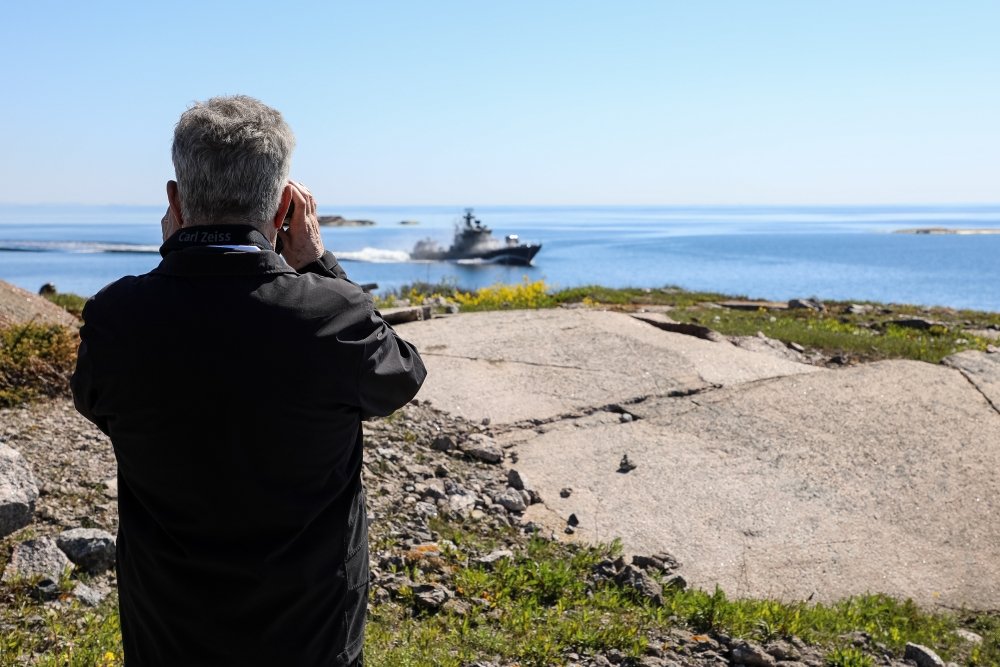
The NATO debate in Finland and Sweden today
Finland
The debate around Finland joining NATO since the end of the Cold War tended to shift depending on the administration in power. While Cold War-era presidents Urho Kekkonen and Mauno Koivisto explicitly rejected NATO membership,[11] President Martti Ahtisaari (1994-2000) strongly advocated for joining.[12] The debate often featured themes ranging from security to political sovereignty to the question of identity. Furthermore, discussions circled around the timing of joining the military alliance as well as practical matters such as securing Finland’s 1,340 km (832 miles) border with Russia.
Supporters of NATO accession in Finland commonly argue that membership would ensure security for a “rainy day.” Concrete benefits to Finland of joining NATO include, in addition to safety guarantees against Russia, deeper knowledge-sharing of strategic regional intelligence. Both Finland and Sweden frequently participate in military exercises (such as Trident Juncture of 2018), sharing information related to cyber defense (via the Political Framework Arrangements of 2017) as well as committing resources to disaster management initiatives run by NATO.[13]
Opponents emphasize (i) the loss of Finland’s military non-aligned status, (ii) a considerable financial burden and (iii) a readiness to supply Finnish soldiers and military equipment to common NATO causes as arguments against NATO membership. Furthermore, the argument goes, as Finland already spends an ample amount on defense (4.87 billion euro or approximately 2 percent of GDP[14] in 2021)[15] it prefers investing additional resources in other areas, such as education and healthcare. Russia would likely reinforce its border with Finland. Furthermore, Finland’s historic trademark as a neutral mediator would be cast into doubt; Helsinki has hosted numerous summits and peace talks over the years. Finnish NATO membership would also significantly weaken Finno-Russian trust, a bond the two countries have carefully repaired and maintained ever since the mid-1940s, and could lead to Russian aggression towards Finland. Currently, Finland is dependent on energy imports from Russia. As of 2019, Finland imports approximately 60 percent of its energy from Russia. Moreover, Finland has important bilateral trade relations with Russia: Russia was the fourth largest importer of Finnish goods in 2017. Additionally, about 70,000 individuals – or 1.2 percent of total population – speak Russian as their mother-tongue, the third largest ethnic group after the Finnish-Swedes (5.2 percent). In the past, Russia has used Russian-speaking minorities in other countries as a pretext for military action.[16]
In a 2016 report commissioned by the Finnish government on the possible effects of a NATO membership, the Foreign Ministry ultimately concluded that Finland should not seek full membership.[17] Finland, the report states, acknowledges its complex history and must ‘adapt to a new situation if the currently strategically beneficial environment significantly changes’ - and preferably, together with Sweden.
A decisive factor for a successful NATO accession is legitimacy as expressed through public opinion. According to a 2021 poll of 2,042 Finns’ opinions on foreign and security policy, an annual poll commissioned by EVA Finnish Business and Policy Forum, approximately 26 percent of Finns are in favor of joining NATO, 40 percent are against joining NATO while 33 percent are undecided. As Figure 1 shows, Finns’ views of NATO have become more favorable in recent years, a trend that can potentially be explained by deteriorating domestic attitudes towards Russia as well as the changes in U.S. administrations.[18] Under current conditions, given where public sentiment surrounding the debate stands now, Finland would not seek membership but wishes to maintain that option.
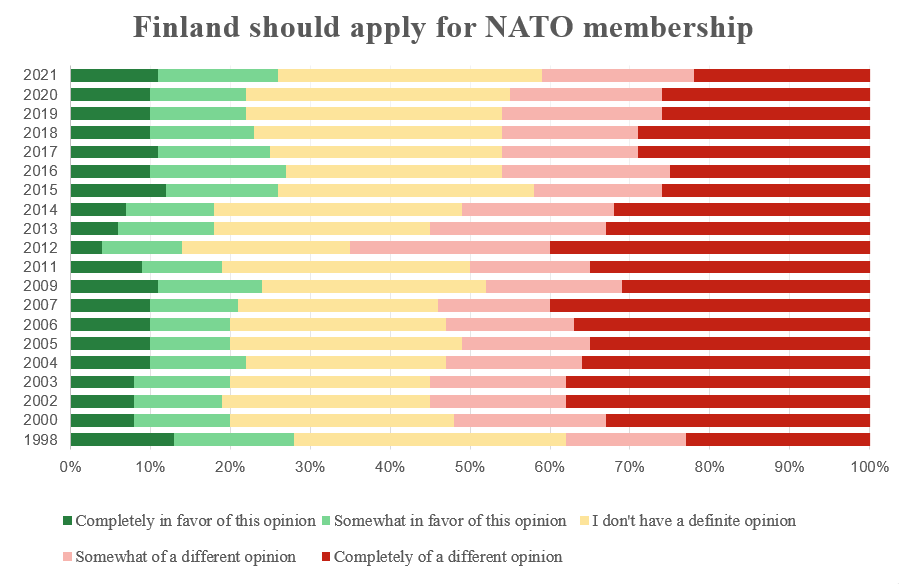
Sweden
Much of the current security debate in Sweden was shaped by a series of events in 2014, in turn accelerating Sweden’s current attitudes towards NATO. While Russia had always been a security concern, it became a more acute threat in the last decade, prompting much of Sweden’s increased militarization.
Peter Hultqvist, Minister for Defense since 2014, has been a key figure in shaping the current Swedish defense policy. Despite being a member of the Social Democrats party that traditionally opposes NATO membership, Hultqvist has sought to bridge the gap between Sweden’s non-alignment policy and its pledges for military solidarity to allies. Sweden reintroduced military conscription in 2017, prompted by “the security change in our neighborhood.”[19] In the 2021-2025 defense budget, Hultqvist has committed Sweden to one of the largest military expansions since the end of the Cold War, which includes increasing military spending by 40 percent, increasing the number of Swedish military personnel from 60,000 to 90,000, and adding a fifth submarine to its navy.[20] Sweden has strengthened its bilateral security cooperation with both Finland and the United States in recent years, and has drawn closer to NATO than ever before.
Russia’s invasion of the Crimean peninsula in 2014 highlighted the need for enhancing Sweden’s national defense. Closer to home, Sweden has reported multiple incursions into its waters and airspace, alarming the general public. Most signs indicate Russia is behind these incursions. A week-long 2014 hunt for a submarine, thought to be of Russian origin that entered the Stockholm archipelago echoed the 1980 submarine scares.[21] This hunt resulted in the largest mobilization of Swedish forces since the end of the Cold War and was widely covered in the media, gripping the Swedish public’s attention. Despite not finding the submarine in question, it sent a shock through Sweden and shattered any illusion of tranquility. Russian jets routinely enter Swedish airspace, fly too close to Swedish aircraft, and test the boundaries and responsiveness of Sweden’s defenses. The most infamous incident occurred over Easter weekend in 2013: Russian jets performed a mock attack on Sweden in a training exercise.[22] Sweden was too slow to react to the Russian jets, but Danish NATO jets scrambled from a base in Lithuania to meet them. This trend of foreign incursions into Swedish waters and airspace has continued for the better part of the past decade with no signs of abating. In 2020, two Russian warships entered Swedish territorial waters near Gothenburg without receiving authorization.[23] A series of mysterious drones flying near the royal palace at Drottningholm, a water treatment center near Norsborg, and nuclear power stations in January 2022 amidst threats of a Russian invasion in Ukraine further highlights unusual activity that could push the Swedish public towards considering NATO membership.[24]
In Sweden, a government-backed inquiry on potential NATO membership in 2016 recommended Sweden not join NATO to avoid a potential backlash from Russia.[25] Moscow has made it abundantly clear that were Sweden to join NATO, there would be consequences of a retaliatory nature.[26] Interestingly, the report addresses a potential accession process and states that it could take approximately a year.
One of the largest questions surrounding Swedish membership in NATO is the fate of Gotland, an island of strategic importance in the Baltic Sea. U.S. Lieutenant General Ben Hodges stated there is no island as strategically important as Gotland during exercises in 2017.[27] Since late 2017, Gotland has hosted a permanent garrison of Swedish soldiers, for the first time since 2005. This is in direct response to Russian aggression in the last decade and has attracted significant media attention as more troops, vehicles, and equipment are stationed in Gotland. A strong Gotland will act as a stabilizing force in the region, it operates as an ideal power projection point for Sweden, and potentially NATO, in both the Baltic Sea and the Baltic countries (if they were under attack from Russia).[28][29] In a press conference in January 2022 between the heads of NATO, Finland, and Sweden, NATO Secretary General Jens Stoltenberg praised Sweden for enhancing its military presence on Gotland to secure the Baltic Sea in light of the recent Russian build-up of troops.[30]
Swedish public support for NATO membership has evolved since the early 1990s, with the gap narrowing between those supporting joining NATO and those against, as seen in Figure 2. A poll from 2014 to 2017 by Ipsos interestingly showed that while those in favor of Sweden joining NATO has remained constant, those against have declined - from 56 percent against in April 2014 to 44 percent against in December 2017 - and the share of those undecided has grown in share, suggesting those against NATO membership are changing their opinions or are re-evaluating.[31] This trend has continued in more recent polls, such as in 2019, 46 percent were in favor of joining, with 34 percent against and 20 percent undecided.[32] A 2022 poll by Demoskop showed support for NATO accession by 42 percent of respondents and opposition by 37 percent of respondents.[33] While support in recent years hovers around 40 percent, it is not enough of a public call for politicians to pursue NATO membership.
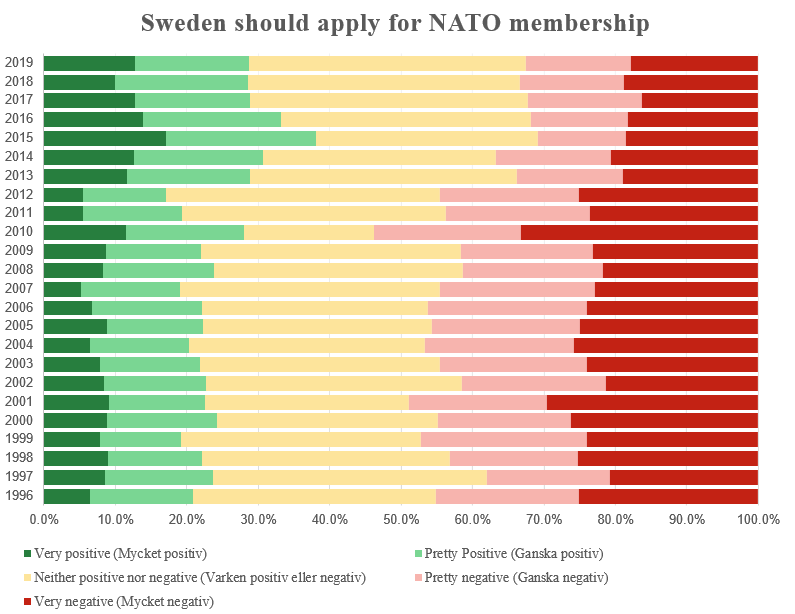
Finland and Sweden’s future with NATO
The continued debate on NATO in Finland and Sweden demonstrates that the question of membership has not been definitively decided. At the time of writing this report in early February 2022, uncertainty abounds. Europeans are still rattled by four years of the Trump administration casting aspersions on NATO. Russia is an unpredictable actor with a penchant for invading to bolster Putin’s domestic approval ratings. Transatlantic relations are at a low point after a disastrous withdrawal from Afghanistan, the mishandling of the AUKUS submarine deal, and as the world continues to grapple with an unending global pandemic. Although it is unlikely Russia will act against the Nordics in a way that a membership in NATO could actively prevent, it is worth exploring the options available to Sweden and Finland; options that are complicated by identity, neutrality, and a long history with Russia.
It is most likely that there will be no dramatic change in the relationship between Finland, Sweden, and NATO, despite the current escalation in tensions over Ukraine. Russia will continue its aggressive foreign policy, meddling in other countries’ elections, cyberspace, and even conducting or threatening hybrid warfare. Incursions in Swedish and Finnish airspace and waterways will likely continue, which may stoke further support of NATO. The threat of invasion of Ukraine further might drive Finland and Sweden to deepen NATO cooperation,[34] but to avoid antagonizing Russia and without widespread public support for membership, the two may ultimately decide to never join the alliance.
It is possible that one country will join without the other. Sweden traditionally has larger public support for NATO membership. Capitalizing on a Russian incursion into Swedish airspace and with mounting public demand for security guarantees, a referendum could be held in Sweden and a clear majority could indicate a preference for NATO membership. Without the same level of public support in Finland for NATO membership, their defense futures would diverge. We see this scenario as unlikely as it would threaten to destabilize the region and decoupling its security from Finland to align with NATO would make Finland more vulnerable.
Although unlikely given the low popularity for NATO within Finland, a Russian permeation of Ukraine’s border might prompt Finland to join NATO without Sweden. If Finland joins NATO, Sweden would be surrounded by NATO allies and its interest to join the alliance would wane. With Finland in the alliance, NATO’s border now presses up against Russia’s. We see this future as unlikely due to Finland’s dependence on energy imports from Russia, trade relationship, and unique historical relationship with Russia. For much of its bilateral relations, Finland has carefully nurtured a rapport with Russia and would be unwilling to risk this precarious dynamic.
It is unlikely that either country would join NATO without the other, as both have expressed solidarity in joining together due to their deep defense cooperation. The two countries not only have deep pre-existing defense cooperation on a bilateral level, but also cooperate in multilateral forums such as the Nordic Defence Cooperation (NORDEFCO), the European Union, the United Nations, and NATO. Both have a strong interest in maintaining stability in the Baltic Sea region.[35] A 2014 Action Plan, signed by the Defence Ministers of Finland and Sweden, established a number of concrete joint projects to pursue that further binds the future of their security together. Due to their high levels of interoperability and operational capabilities, no decision about NATO membership would be made without close consultations between the two countries. In the meantime, NATO respects Finland and Sweden’s independence and decision not to join the alliance and does not pressure either countries to make a decision regarding membership. Finally, Finland and Sweden have deep business, cultural, and historical ties. While the two have different motivations around NATO membership, they share deeply held beliefs about their place in the Western community. If an accession were to happen, and if history is any guide, Finland and Sweden would likely join NATO together.

Conclusion
Given the state of public opinion in both Sweden and Finland, it is unlikely that either country will join NATO in the foreseeable future, barring any significant changes in the relations between the EU and Russia. This corresponds with two government reports published in recent years, sponsored by the governments of Finland and Sweden, respectively. These reports concluded that NATO membership would not be advantageous to either country as it would disrupt the precarious balance of power in the region. Although hardly the final word in this ongoing debate on NATO membership, both reports highlight the current concerns and views of the governments of Sweden and Finland and provide the best insights into the prospects of membership.
This could all change in the event of a large-scale conflict in Europe. Public support for joining the NATO alliance is at a record high in Sweden and Finland as a result of the ongoing tensions. If the worst should occur in Ukraine, it would only drive Sweden and Finland away from non-alignment and towards NATO membership. If one of the reasons to not join NATO is to avoid disrupting the precarious balance of power in the region and Russia disrupts that balance by invading Ukraine, it would make NATO membership a viable option for Finland and Sweden. In this case, it is highly likely that Finland and Sweden would join together, as they did in 1995 with the EU.
The option of joining NATO remains up to Sweden and Finland themselves, respectively, and cannot be made for them or by any outside party. This has been reaffirmed by Finland and Sweden’s leadership in light of recent Russian aggression. In his 2022 New Year’s Speech, Finnish President Niinistö said “Finland’s room to maneuver and freedom of choice also include the possibility of military alignment and of applying for NATO membership, should we ourselves so decide.” When Russia’s foreign ministry spokeswoman, Maria Zakharova, claimed there would be “grave political and military consequences” if either Sweden or Finland joined NATO, Swedish Minister for Foreign Affairs Ann Linde responded “It should not be up to Russia if we could join or if we could not join NATO.” The NATO option is a powerful tool in their arsenals that ensures further stability and leverage in negotiations. Ultimately, the decision of whether to join NATO rests with Finland and Sweden themselves, although a Russian invasion of Ukraine might finally answer the NATO question after decades of neutrality, non-alignment, and re-evaluation of the security risks posed by Russia.
References
[1] “Agreement on measures to ensure the security of The Russian Federation and member States of the North Atlantic Treaty Organization,” Ministry of Foreign Affairs of the Russian Federation, December 17, 2021, https://mid.ru/ru/foreign_policy/rso/nato/1790803/?lang=en&fbclid=IwAR1e94yIg69YpOZ1KtSscwFyo6DQfiaD1IMD-2trxN6bJ-TELxq_Zxryxqk.
[2] Andrea Shalal, Steve Holland, and Andrew Osborn, “Biden warns Putin of sanctions, aid for Ukraine military if Russia invades,” Reuters, December 8, 2021, https://www.reuters.com/markets/currencies/biden-putin-set-crucial-call-over-ukraine-2021-12-07/.
[3] The main pillars of the treaty decreed (i) Finland to resist armed attacks by Western forces on Finland or the Soviet Union through Finland and acknowledged (ii) Finland’s wish to stay out of great-power politics. Encyclopædia Britannica, “Finland - The Postwar Period,” https://www.britannica.com/place/Finland/The-postwar-period#ref393175.
[4] Mikael Nilsson, “Amber Nine: NATO's Secret Use of a Flight Path over Sweden and the Incorporation of Sweden in NATO's Infrastructure,” Journal of Contemporary History (2009), vol. 44, no. 2, pp. 287-307, April, 2009, https://www.jstor.org/stable/40543128.
[5] Sebastien Roblin, “In 1981, a Stranded Russian Submarine Sent Sweden into a Frenzy,” The National Interest, November 13, 2020, https://nationalinterest.org/blog/reboot/1981-stranded-russian-submarine-sent-sweden-frenzy-172520.
[6] Elisabeth Braw, “Finland and Sweden Are Done With Deference to Russia,” Foreign Policy, January 5, 2022, https://foreignpolicy.com/2022/01/05/finland-sweden-nato-russia-putin/.
[7] “Swedish Membership in NATO: To be or not to be?” The Perspective, April 3, 2018, http://www.theperspective.se/?p=3982.
[8] Anna Wieslander, ““The Hultqvist doctrine” – Swedish security and defence policy after the Russian annexation of Crimea,” Defence Studies, May 12, 2021, https://www.tandfonline.com/doi/pdf/10.1080/14702436.2021.1955619?needAccess=true.
[9] Michael Ruhle and Nicholas Williams, “Partnership for Peace: A Personal View from NATO,” Parameters (1994), vol. 24, number 1, https://press.armywarcollege.edu/cgi/viewcontent.cgi?article=1717&context=parameters.
[10] “Partnership for Peace programme,” NATO, last updated March 23, 2020, https://www.nato.int/cps/en/natohq/topics_50349.htm.
[11] “Koivisto: Suomi kumartaa nyt länteen,” YLE News, March 21, 2009, https://yle.fi/uutiset/3-5735399.
[12] Arno Rydman, “Martti Ahtisaari: Suomen paikka on Natossa,” Verkkouutiset, April 10, 2014 https://www.verkkouutiset.fi/martti-ahtisaari-suomen-paikka-on-natossa-18882/.
[13] “Relations with Finland,” NATO, last updated September 2, 2021, https://www.nato.int/cps/en/natohq/topics_49594.htm#:~:text=Finland%20engages%20with%20NATO's%20Civil,in%20the%20Euro%2DAtlantic%20area.
[14] “Fighter procurement will increase defence budget,” Finnish Ministry of Defence, August 13, 2020, https://valtioneuvosto.fi/en/-/fighter-procurement-will-increase-defence-budget.
[15] Despite this figure representing a 54 percent increase compared to 2020, this was due to a one-off investment in Finland renewing its fighter jet fleet. Essi Lehto and Mike Stone, “Finland orders 64 Lockheed F-35 fighter jets for $9.4 bln,” Reuters, December 10, 2021, https://www.reuters.com/business/aerospace-defense/lockheed-f-35-jet-wins-finnish-fighter-competition-source-2021-12-10/.
[16] ““Russkiy Mir” as the Kremlin’s Quasi-ideology,” Ukraine Crisis Media Center, May 28, 2021, https://uacrisis.org/en/russkiy-mir-as-the-kremlin-s-quasi-ideology.
[17] Mats Bergquist, Francois Heisbourg, René Nyberg, and Teija Tiilikainen, “Arvio Suomen mahdollisen NATO-jasenyyden vaikutuksista” Finnish Ministry for Foreign Affairs, 2016, https://julkaisut.valtioneuvosto.fi/handle/10024/79159.
[18] Jarmo Huhtanen, “Opposition to NATO membership fell to a record low,” Helsingin Sanomat, January 17, 2022, https://www.hs.fi/politiikka/art-2000008515424.html.
[19] “Sweden brings back military conscription amid Baltic tensions,” BBC News, March 2, 2017, https://www.bbc.com/news/world-europe-39140100.
[20] Reuters in Stockholm, “Sweden to increase military spending by 40% as tension with Russia grows,” The Guardian, October 15, 2020, https://www.theguardian.com/world/2020/oct/15/sweden-to-increase-military-spending-by-40-as-tension-with-russia-grows.
[21] “Sweden submarine search called off,” BBC News, October 24, 2014, https://www.bbc.com/news/world-europe-29752368.
[22] “Russian jets practised attacks on Sweden,” The Local, April 22, 2013, https://www.thelocal.se/20130422/47474/.
[23] Reuters Staff, “Sweden calls in Russian diplomats to protest breach of its waters,” Reuters, September 23, 2020, https://www.reuters.com/article/us-sweden-security-russia/sweden-calls-in-russian-diplomats-to-protest-breach-of-its-waters-idUSKCN26E2LF.
[24] Charlie Duxbury, “Mystery drones over Sweden spark security scare,” Politico, January 19, 2022, https://www.politico.eu/article/mystery-drones-over-sweden-spark-security-scare/.
[25] Radio Sweden, “NATO membership not for Sweden, Ministers say,” The Barents Observer, September 12, 2016, https://thebarentsobserver.com/en/security/2016/09/nato-membership-not-sweden-ministers-say.
[26] Vince Chadwick, “Swedish-Russian relations enter deep freeze,” Politico, September 17, 2015, https://www.politico.eu/article/swedish-russian-news-nato-wallstrom/.
[27] “No island as important as Gotland, says US military chief,” The Local, July 24, 2017, https://www.thelocal.se/20170724/no-island-as-important-as-gotland-says-us-military-chief-ben-hodges-europe-nato-russia-sweden/.
[28] Felix K. Chang, “Sweden’s Importance to NATO’s Defense of the Baltics,” Foreign Policy Research Institute, September 28, 2017, https://www.fpri.org/2017/09/swedens-importance-natos-defense-baltics/.
[29] “Sweden’s Defence Policy 2016 to 2020,” Government Offices of Sweden, June 1, 2015, https://www.government.se/globalassets/government/dokument/forsvarsdepartementet/sweden_defence_policy_2016_to_2020.
[30] “Press conference with NATO Secretary General Jens Stoltenberg, the Minister for Foreign Affairs of Finland, Pekka Haavisto and the Minister for Foreign Affairs of Sweden, Ann Linde,” NATO, January 24, 2022, https://www.nato.int/cps/en/natohq/opinions_191039.htm.
[31] David Ahlin and Björn Benzler, “Försvar Och NATO,” Ipsos, January 2018, https://www.ipsos.com/sites/default/files/ct/news/documents/2018-01/dn_ipsos_nato_forsvar_20180108_0.pdf.
[32] Lena Mellin, “Nära varannan vill att Sverige går med i Nato,” Aftonbladet, January 11, 2022, https://www.aftonbladet.se/nyheter/kolumnister/a/yRg23E/nara-varannan-vill-att-sverige-gar-med-i-nato.
[33] Emil Forsberg and Sebastian Comar Alm, “Natofrågan splittrar svenska folket,” Aftonbladet, January 23, 2022, https://www.aftonbladet.se/nyheter/a/8QzzGA/natofragan-splittrar-svenska-folket.
[34] Niclas Rolander, “Sweden Vows NATO Ties Will Deepen, Irked by Russian Demands,” Bloomberg, January 10, 2022, https://www.bloomberg.com/news/articles/2022-01-10/sweden-vows-nato-ties-will-deepen-irked-by-russian-demands.
[35] “Final reports on deepened defence cooperation between Finland and Sweden,” Government of Sweden, https://www.government.se/49cb76/contentassets/ab2d3cfaefb64537980ae9ef8785e8f5/final-reports-on-deepened-defence-cooperation-between-finland-och-sweden.pdf.
---
This article was updated to include Ireland in the list of EU member states that are not a part of NATO.
Authors



Global Europe Program
The Global Europe Program is focused on Europe’s capabilities, and how it engages on critical global issues. We investigate European approaches to critical global issues. We examine Europe’s relations with Russia and Eurasia, China and the Indo-Pacific, the Middle East and Africa. Our initiatives include “Ukraine in Europe”—an examination of what it will take to make Ukraine’s European future a reality. But we also examine the role of NATO, the European Union and the OSCE, Europe’s energy security, transatlantic trade disputes, and challenges to democracy. The Global Europe Program’s staff, scholars-in-residence, and Global Fellows participate in seminars, policy study groups, and international conferences to provide analytical recommendations to policy makers and the media. Read more

Explore More
Browse Insights & Analysis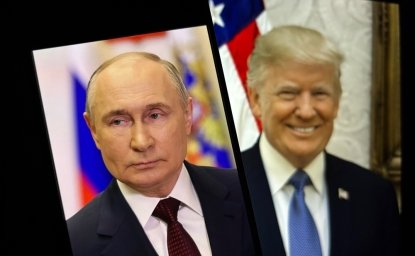
Trump Speaks with Putin in Effort to End Russia-Ukraine War
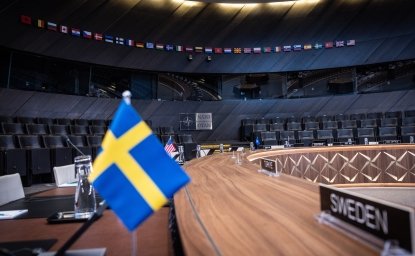
From Partner to Ally: Sweden’s First Year in NATO
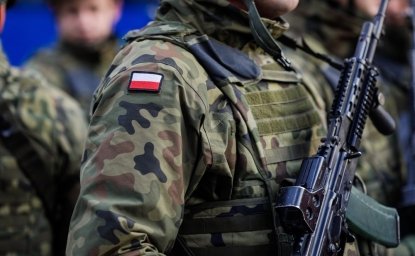
“Security, Europe!”: Poland's Rise as NATO's Defense Spending Leader
